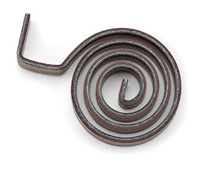
 Almost one hundred years ago, on April 24, 1916, to be precise, the company
that would grow into Engineered Materials Solutions was founded to meet the
needs of the nearby jewelry industry for specialty clad metals. Named General
Plate Company, its products offered a surface of precious metal, for the
desired appearance and cosmetic characteristics, but with enhanced mechanical
properties and reduced precious metal content and cost. The industry regarded
clad metals as a solution.
Almost one hundred years ago, on April 24, 1916, to be precise, the company
that would grow into Engineered Materials Solutions was founded to meet the
needs of the nearby jewelry industry for specialty clad metals. Named General
Plate Company, its products offered a surface of precious metal, for the
desired appearance and cosmetic characteristics, but with enhanced mechanical
properties and reduced precious metal content and cost. The industry regarded
clad metals as a solution.
The company grew and in 1931 it merged with Spencer Thermostat Company becoming Metals & Controls Corporation. The new company offered customers the knowledge of metallurgically bonding dissimilar metals combined with the technology of applying these materials to accomplish various tasks – safety, regulation and control solutions for burgeoning electrical, appliance and other markets.
Metals & Controls invented PT (Pressure Temperature) Bonding in 1952. More clad metal is now produced by this method than any other. Because of its experience working with a wide range of materials, and particularly materials of high cost, M&C was chosen by the government as the first commercial fabricator of uranium fuel rods.
Metals & Controls merged with Texas Instruments in 1959, and the company’s reputation for metallurgical excellence plus processing and applications innovation continued to grow. Notable milestones include the invention of clad coinage for the U.S. Mint in 1964, the first application of stainless clad aluminum automobile trim in 1971, the first use of copper clad aluminum wire in CATV transmission lines in 1977, the first application of copper/invar/copper to control thermal expansion in electronics substrates and circuit boards in 1985, and the development of isobaric cold rolling – a solution to the problem of cold rolling brittle materials – in 1992.
In 2000 we became Engineered Materials Solutions with our new name reflecting exactly what we have been providing since the beginning.
In early 2007 we opened our new manufacturing plant in Baoying, China, which allows us to serve our customers with the same stringent quality standards from bases on two continents.
In 2007 we were acquired by Wickeder Westfalenstahl GmbH, Wickede an der Ruhr, Germany, and became a part of the Wickeder Group of companies.
For more information on Wickeder, please visit www.wickeder.de
Texas Instruments is a trademark of Texas Instruments Incorporated